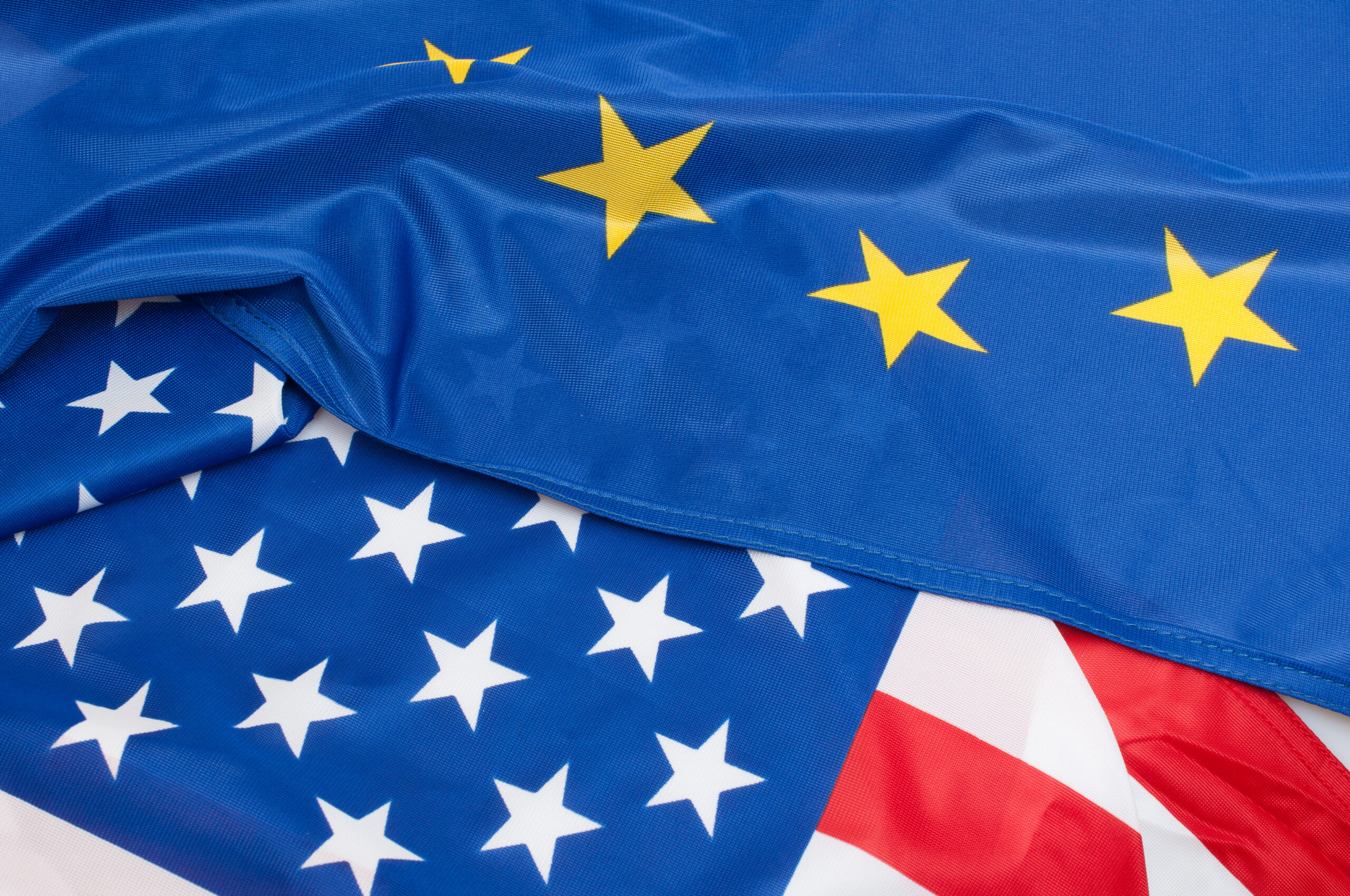“As prior art material to the patentability of a U.S. patent application must be disclosed to the USPTO in an IDS, U.S. patent prosecutors should ensure they are monitoring pending U.S. patent applications with co-pending European patent applications that receive a Rule 71(3) communication.”
 The impact of the long-awaited launch of the Unified Patent Court (UPC) is hard to overstate. While litigators and patent portfolio managers are immediately feeling the impact in Europe, surprisingly, they should also expect an impact on information disclosure statement (IDS) strategy for U.S. patent applications.
The impact of the long-awaited launch of the Unified Patent Court (UPC) is hard to overstate. While litigators and patent portfolio managers are immediately feeling the impact in Europe, surprisingly, they should also expect an impact on information disclosure statement (IDS) strategy for U.S. patent applications.
To understand the impact, this article provides a background on how the European Patent Office (EPO) and UPC consider earlier national rights, how patent applicants can address earlier national rights to prevent invalidation at the UPC, how earlier national rights identified in a European patent application can affect a U.S. application and should be addressed in an IDS, and how this information can be used for monetization and litigation.
Earlier National Rights Before the EPO and the UPC
Unlike the EPO, the UPC may invalidate a European patent with unitary effect (also referred to as a “Unitary Patent (UP)”) based on earlier national rights. An earlier national right is a national patent or application in a contracting European Patent Convention (EPC) state filed before and published on or after the filing date of a European patent application. The EPO does not consider earlier national rights during substantive examination of a European patent application. However, the EPO is bound by the EPC, which stipulates: “A national patent application and a national patent in a Contracting State shall have with regard to a European patent designating that Contracting State the same prior right effect as if the European patent were a national patent.” (Art. 139(2) EPC). This means that if the applicant becomes aware of earlier national rights based on a national application or patent during EPO examination, the applicant must decide how to address it. Specifically, the applicant can (1) provide an amended claim set addressing the earlier national right in that country; (2) decide to forgo validation in the country; or (3) determine that arguments presented in national court may overcome the earlier national right such that validity may be preserved there. The applicant decides how to respond to the earlier national right; the EPO merely follows their request.
The impact of earlier national rights can differ at the UPC. During examination, the EPO does not consider earlier national rights from a national patent office of an EPO member state (e.g., at the Estonian Patent Office). In contrast, the UPC may consider earlier national rights (e.g., a German patent application) to be the subject of an invalidity proceeding. Provided for in the Unified Patent Court Agreement (UPCA) Art. 65(2): “The Court may revoke a patent, either entirely or partly, only on the grounds referred to in Articles 138(1) and 139(2) of the EPC.” Therefore, if a European patent with unitary effect is tried at the UPC for validity based on earlier national rights, the UP could be revoked or limited in its entirety for all participating EU countries.
Imagine this scenario taking place in Germany, a UPC member state:
- Company A files a patent application at the German Patent and Trade Mark Office.
- A few days later, Company B files a very similar invention in a patent application at the EPO.
- 18 months after Company A’s application is filed, it is published as a German patent application, thus transforming it into a national prior right, i.e., potentially intervening prior art.
- The EPO grants Company B’s European patent with unitary effect.
- Now, Company A or a third party could initiate UPC revocation proceedings against Company B’s European patent, citing to Company A’s earlier-filed German patent application. If Company B’s European patent lacks novelty over Company A’s application, then Company B’s European patent will be deemed invalid in all participating EU countries. Art. 139 EPC and Art. 3 Regulation (EU) No. 1257/2012.
Although this scenario refers specifically to a German national prior right, it could happen with national patent publications of any participating UPC member state.
Preventing Invalidation at the UPC When There are National Prior Rights
Leading up to the start of the Unitary Patent system, the EPO addressed this “wrinkle” in the law by performing a top-up search. Specifically, the EPO recently started performing a search on national prior rights and notifying applicants as a service in the Rule 71(3) communication (“intention to grant” under the EPC—similar to a U.S. Notice of Allowance) on the presence or absence of prima facie relevant search results for national prior rights. Responsibility for a comprehensive assessment of any such rights remains with the applicant alone.
In the example scenario, ideally, the EPO would have notified Company B of Company A’s filing in Germany. In response, Company B could amend the claims to proactively address the German national right such that the European patent with unitary effect is based on the amended claim set. Alternatively, Company B could amend the claims only for Germany and proceed with traditional national validations without claim amendments in all other desired EPC contracting states (using the “classic” European patent application without unitary effect).
What Does All This Have to Do with the United States?
As prior art material to the patentability of a U.S. patent application must be disclosed to the USPTO in an IDS, U.S. patent prosecutors should ensure they are monitoring pending U.S. patent applications with co-pending European patent applications that receive a Rule 71(3) communication. The duty of disclosure is not limited to U.S. patent prosecutors, but extends broadly to all individuals involved in substantively preparing the patent application, including assignees, inventors, and even portfolio managers.
U.S. patent prosecutors should determine whether earlier national rights included in a Rule 71(3) communication should be included in an IDS on a case-by-case basis. While a national application (e.g., a German application) that was filed before a U.S. application and published after may not qualify as prior art under § 102(a)(2) on its own because it was not published under § 35 U.S.C. 122(b), a Paris Cooperation Treaty (PCT) application that claims priority to a national application would be treated as a U.S. application, which means the national application used for the priority claim could be considered as prior art under § 102(a)(2). While there may not be an obligation for the U.S. patent prosecutors to search for PCT applications that have priority claims to earlier national patent applications included in the Rule 71(3) communication, it is reasonable for a U.S. patent prosecutor to perform such a search as materially relevant prior art could be found and added to an IDS. At the very least, earlier national rights included in the Rule 71(3) communication should cause the U.S. patent prosecutor to take reasonable measures to comply with the duty to disclose, including verifying whether any cited art qualifies as prior art in the US.
Staying with the Company A and Company B scenario, when Company B receives the Rule 71(3) communication that informs Company B of Company A’s potentially intervening German national right, Company B should determine whether Company A’s German national right should be disclosed to the USPTO—in the form of an IDS listing Company A’s German application (37 C.F.R. §1.56). For example, Company B may determine that Company A filed a PCT application claiming priority to Company A’s German national application, which means that the German national application and PCT application qualify as prior art under 35 U.S.C. § 102(a)(2). Because Company A’s German application is certainly material to patentability of Company B’s claimed invention, Company B should file an IDS that includes Company A’s German application (or at least the PCT or U.S. application that is a translated version of the Company A’s national German application).
This is not a once in a blue moon scenario because potentially earlier national rights (e.g., applications and patents) publish frequently. For example, the German Patent and Trade Mark Office publishes about 60,000 patent applications annually, the French Patent Office publishes about 15,000, the Italian Patent Office publishes about 11,000, and the Netherlands Patent Office publishes about 9,000. This means that each year, at least 100,000 new national patent publications could be used as invalidating prior art based on earlier national rights from UPC members.
When the Rule 71(3) Communication Lists National Prior Rights, Prepare an IDS
As a general rule, we recommend that paralegals, attorneys, and docket managers of U.S.-European patent application families set reminders in their dockets to review Rule 71(3) communications as soon as they are received and to note any national prior rights that are cited. If national publications are found in the Rule 71(3) communication, an attorney should consider adding them to an IDS a case-by-case. Furthermore, it is possible that the European patent application related to the Rule 71(3) communication including earlier national prior rights is materially relevant to U.S. patent applications with different (e.g., later) effective filing dates, where the patent portfolio manager is also responsible for filing new IDSs. The decision should be made quickly because references cited in foreign offices communications should be cited in an IDS within three months of notification. If the three-month IDS deadline is not observed, in later stages of examination proceedings this can lead to a hefty penalty in the form of the fee for a Request for Continued Examination (RCE).
When submitting an IDS, applicants should adhere to the USPTO’s requirement to translate all foreign references into English, as many European national prior rights will not be published in English. In view of the three-month IDS deadline, which is not extendable, preparing English translations should not be put off until the last minute. As a practical tip, a machine translation of the national application or patent should be sufficient for filing with an IDS at the USPTO.
Using This Information for Monetization and Litigation
Patent portfolio managers may find it beneficial to file a continuation for a U.S. patent application that has a co-pending European patent application to reduce the risk of earlier national rights negatively affecting a patent portfolio’s value. Because a European patent application can be pending for three or more years and a co-pending U.S. patent application may be granted after only two years, it is common for a U.S. application to grant before the EPO has performed a top-up search for earlier national rights. Specifically, the USPTO can issue a notice of allowance for a U.S. application several months or even a year before the EPO issues a Rule 71(3) communication including any earlier national rights, which may need to be included in an IDS. For this reason, it may be beneficial for patent applications that are important from a monetization perspective to have a continuation pending in the United States. Keeping a U.S. continuation alive enables the applicant to update their pending U.S. application, by submitting an IDS, when they identify national prior rights in corresponding European examination that might prejudice U.S. patentability. If necessary, the applicant can revise the claims in a continuation to be valid over the earlier national right.
The savvy litigator will recognize the potential for showing inequitable conduct in cases where U.S. applicants fail to observe the above recommendations. At the very least, a litigator can use a Rule 71(3) communication as a starting point to determine whether there is § 102(a)(2) prior art that was potentially not cited in an IDS. Further, even with inequitable conduct becoming harder to prove, a litigator can use the Rule 71(3) communication as a guide for finding strong prior art that could be used for invalidation alone. For example, national applications cited in a Rule 71(3) communication can serve as a guide for finding prior art to invalidate an asserted patent (e.g., using earlier national rights to search for additional prior art based on priority claims to national application, applicant or inventor name for national application, and patent family members related to national application).
In sum, Rule 71(3) communications now include valuable information not only for European patents, but also for co-pending U.S. patent applications, patents asserted in U.S. litigation, and monetization strategy. With this new information, patent portfolio managers can make informed decisions related to IDSs, litigation strategy, or even simply update a client on earlier national rights for its competitor and how that may affect the patent landscape in Europe, as well as the United States.
Image Source: Deposit Photos
Image ID: 37994943
Author: jamdesign

![[IPWatchdog Logo]](https://ipwatchdog.com/wp-content/themes/IPWatchdog%20-%202023/assets/images/temp/logo-small@2x.png)



![[Advertisement]](https://ipwatchdog.com/wp-content/uploads/2024/04/UnitedLex-May-2-2024-sidebar-700x500-1.jpg)
![[Advertisement]](https://ipwatchdog.com/wp-content/uploads/2024/04/Artificial-Intelligence-2024-REPLAY-sidebar-700x500-corrected.jpg)
![[Advertisement]](https://ipwatchdog.com/wp-content/uploads/2024/04/Patent-Litigation-Masters-2024-sidebar-700x500-1.jpg)

![[Advertisement]](https://ipwatchdog.com/wp-content/uploads/2021/12/WEBINAR-336-x-280-px.png)
![[Advertisement]](https://ipwatchdog.com/wp-content/uploads/2021/12/2021-Patent-Practice-on-Demand-recorded-Feb-2021-336-x-280.jpg)
![[Advertisement]](https://ipwatchdog.com/wp-content/uploads/2021/12/Ad-4-The-Invent-Patent-System™.png)






Join the Discussion
6 comments so far.
Gregory Rosenthal
June 25, 2023 08:34 pm@David, the EPO added this top-up search as part of rule 71(3) communications on Sept. 1, 2022 (in anticipation of the UPC start in 2023).
David
June 20, 2023 07:07 pmYou say that this started “leading up to the start of the Unitary Patent System.” Any idea when, exactly? Just curious about how far we should consider looking back at issued 71(3) communications to see if they cited anything.
Alex
June 20, 2023 12:56 amVery insightful and well written comment on an interesting intersection of US and EP patent law.
Shyon Babazadeh
June 19, 2023 09:22 pmInteresting read. I’d like to see another article about attorney client privilege with European patent attorneys.
Anna Johnson
June 19, 2023 07:39 pmTimely insights on a big change in the global patent landscape.
Giulianna
June 19, 2023 07:06 pmInteresting intersection of US patent law, the EPC, and the UPC.